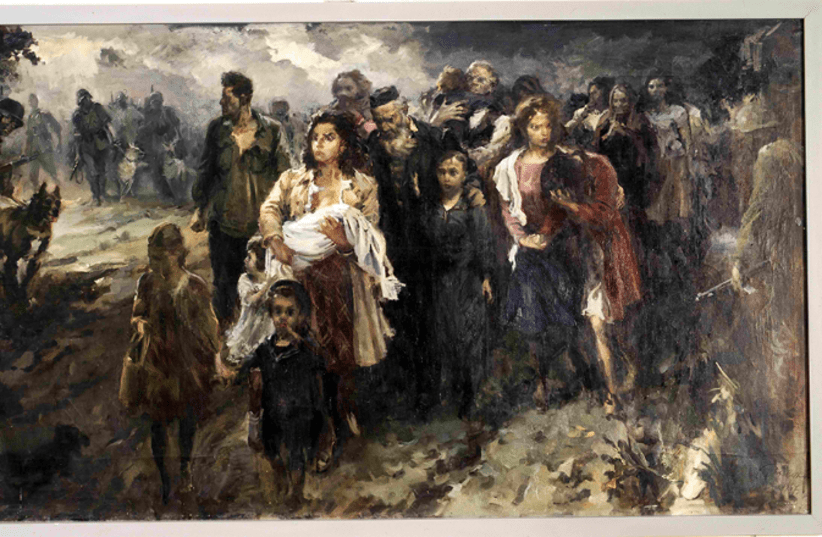Jewish artworks hold tremendous importance, not only within Jewish communities themselves but also narrate the entire global culture and history, serving as tangible evidence of the past. In this article, we will review the five most important and esteemed Jewish artworks.
The Dura-Europos Synagogue
Discovered in 1928 during archaeological excavations, this synagogue dates to the Talmudic period, around 244-245 CE, and it was then covered in earth in 256 CE. The walls feature some of the oldest surviving Jewish artworks, depicting various Biblical scenes including: the lives of the Patriarchs, Moses receiving the Ten Commandments, scenes from the Books of the Prophets like Samuel, King David, King Solomon, and Elijah, as well as the Vision of the Dry Bones by Ezekiel and scenes from the Book of Esther. These paintings are in Hellenistic and Persian styles.
Sarajevo Haggadah
This is the oldest preserved Haggadah in the world, written in Barcelona around 1350. It features clear and legible Jewish script on bleached skin, adorned with silver and gold. The first part of the Haggadah contains 34 pages of illustrations depicting Torah stories from the creation of the world to the death of Moses, including the years the Israelites spent in Egypt. The latter pages show illustrations of the Temple, preparing Charoset for Passover Seder, and people leaving the synagogue after holiday prayers. The second part contains the Haggadah text with a few illustrations and the third part includes a cycle of poems and prayers for Passover. The Haggadah is currently displayed at the National Museum of Bosnia and Herzegovina in Sarajevo.
Babi Yar: The Last Way
Created by the artist Yosef Kuzkovsky in 1947, this powerful and moving painting depicts the massacre of Jews, including infants, children, women, elderly, and men, in the Babi Yar massacre in Ukraine. Kuzkovsky managed to smuggle the painting to Israel in 1969, shortly before his death. The painting is known for its impact, especially depicting a Jewish mother holding her daughter's hand in one hand and her baby to her chest with the other. It is currently placed in the Knesset in Israel.
Surprisingly, we learned that there is an original version of this painting. It is an oil painting created by Yosef Kuzkovsky in 1946 and is currently held in private hands.
Chagall Windows
Marc Chagall, a renowned Jewish artist, completed his most famous work in Israel in 1962 for the Hadassah Medical Center in Jerusalem. The series of stained-glass windows in the synagogue depict the 12 tribes of Israel. The windows are 2.5 meters tall and are grouped into four sets, each window consisting of three smaller windows. Chagall chose colors representing the breastplate stones of the High Priest, with prominent colors including red, yellow, blue, and gold.
Arch of Titus
Although not created by Jewish artists, this arch is one of the most significant artworks in Jewish history as it represents the destruction of the Temple and the enduring strength of Jewish suffering. The arch itself depicts the Roman victory after the siege of Jerusalem in 70 CE. Inside, a relief shows the looting of Temple vessels, including the Menorah. The Arch of Titus is located in the Roman Forum in Rome, a famous victory arch in the city.
This article was written in cooperation with The Jewish Culture Art
